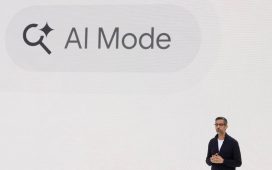Business experiments help entrepreneurs test their hypotheses. Rather than define the problem by making too many hypotheses, a digital entrepreneur can formulate a few assumptions, design experiments, and check them against the actions of potential customers. Once measured, the impact, the entrepreneur, will be closer to defining the problem.
Define the problem by suspending the “why”


The most difficult, yet rewarding part for entrepreneurs is to understand the problem or a need existing in the marketplace. In short, the success of the product and the business model, in the long run, will be the side effect of how well a company solves a specific problem.
Problems usually have both functional, and psychological elements. Therefore, defining a problem adequately means solving for both functionality, and psychology.
But how do you get hold of a problem? One way to start is to ask why as many times as possible, thus drilling more and more into the problem. This is at the foundation of the five whys analysis.
While I like this approach for theoretical problem, if we have a business model which we want to test in the marketplace, let use experiments to gather quick feedbacks by the people we want to serve.
In short, we’ll formulate a few hypotheses around a problem then test that out, thus using a feedback loop to inform on whether we’re on the right path to solve the problem!
Thus, leaving the “why” suspended while we let the market tell us if we’re moving in the right direction.
Imagine the case you want to start a digital business model and test the monetization strategy for your publishing business. You have an existing audience but you’re not sure about what monetization strategy makes sense.
Do you survey them?
Not a good idea! What about formulating a few hypotheses and test whether they will pay for it?
Case study: subscription-based magazine
For the sake of helping our potential customers formulate the problem, we’ll start by formulating a few hypotheses:
- Hypothesis 1: my audience needs a curated weekly newsletter
- Hypothesis 2: my audience needs a set of premium resources
- Hypothesis 3: my audience needs a weekly group coaching session
Rather than go back and theorize about what our audience needs, let’s test our hypotheses.
Experiments: what, how, when
Defined the key hypotheses, for each of them define a key experiment. We want the experiment to be well defined, in terms of:
- How is the experiment structured? (process)
- What outcome do I expect from the experiment? (expectation)
- When will the experiment be deemed successful? (duration)
Connected to each of the hypotheses above craft your experiment:
- Experiment 1: how: I’ll use a pop-up form triggered on the homepage that explains how the newsletter works with a simple CTA to subscribe. what: each subscription will be deemed as a successful action. On a test of a 1000 people, 20 subscribers (2%) will make the experiment successful. when: the experiment will last a week from now.
- Experiment 2: how: I’ll use a dedicated landing page accessible from the main menu that shows the cover and intro of the book coming out with a simple CTA to purchase it. what: each purchase will be deemed as a successful action. On a test of a 1000 people, 20 purchases (2%) will make the experiment successful. when: the experiment will last a week from now.
- Experiment 3: how: I’ll use a dedicated landing page accessible from the main menu that shows how the group coaching session will work with a simple CTA to purchase it. what: each purchase will be deemed as a successful action. On a test of a 1000 people, 10 purchases (1%) will make the experiment successful. when: the experiment will last a week from now.
Don’t track, measure for impact and traction
Once set up the process, expectation, and duration be patient and let the experiment run till the end to prevent stopping it too soon.
Once you have enough data to draw any conclusion also use your instinct. For instance, if experiment number one provided better results but you feel like it won’t be as successful in the long-run, compared to say experiment three.
You might want to give a few other runs.
Case Studies
Problem Definition Examples:
- Health and Wellness Blog:
- Process: As you run the blog, you notice that in addition to providing fitness routines, you also start addressing readers’ insecurities and self-esteem issues in your content.
- Expectation: You expect that by addressing these psychological aspects, you’ll see increased reader engagement and positive feedback.
- Duration: The success of this experiment will be measured over several months as you monitor changes in reader interaction and feedback.
- Mobile Banking App:
- Process: While developing the app, you integrate features that not only provide easy account access but also offer financial education and tips for users.
- Expectation: You anticipate that users will feel more financially empowered and secure, leading to higher user satisfaction and continued app usage.
- Duration: The experiment’s success will be assessed over a period of one year to observe how user behavior and feedback evolve.
Experimentation Examples:
- Fashion E-Commerce Site:
- Process: You create two versions of product descriptions and run an A/B test to determine which one results in higher conversion rates.
- Expectation: You expect that one of the descriptions will lead to a significantly higher conversion rate, indicating which approach is more effective.
- Duration: The experiment will run for one month to collect sufficient data for analysis.
- Podcast Premium Subscriptions:
- Process: You offer premium subscriptions to your podcast audience, providing ad-free episodes and exclusive content.
- Expectation: You anticipate that a percentage of your audience will subscribe to the premium offering, providing an additional revenue stream.
- Duration: The success of this experiment will be measured over a three-month period to assess subscription sign-ups and listener feedback.
Revealed Preferences Example:
- Movie Streaming Service:
- Process: You analyze viewer data to identify that viewers prefer shorter, easily digestible series over lengthy films.
- Expectation: You expect that by prioritizing these series and tailoring recommendations, you can increase user engagement and satisfaction.
- Duration: The success of this revealed preference analysis will be ongoing, with continuous monitoring of viewer behavior and content recommendations.
Importance of Experimentation and Assumptions Examples:
- Restaurant Menu Optimization:
- Process: You offer a diverse menu and closely monitor which dishes gain popularity based on customer orders and reviews.
- Expectation: You expect that certain dishes will consistently receive positive feedback and become customer favorites.
- Duration: The experiment will be ongoing, with regular menu updates based on customer preferences and feedback.
- Simplified Tech Startup Product:
- Process: You release a simplified version of your productivity software and gather user feedback to refine the final product.
- Expectation: You anticipate that user adoption and satisfaction will increase with the simplified version, leading to better long-term success.
- Duration: The experiment will run for six months, with regular feedback collection and product adjustments.
Key takeaways
You can spend hours making assumptions about what your customers want, or you can formulate a few practical hypotheses and test them out.
While entrepreneurs get rewarded in the long-term for uncovering important business problems, often times this process of problem discovery requires a lot of experimentation, tinkering, and willingness to question our own assumptions.
One of the most effective ways is through a process of problem discovery made of looking at what your customers really do which connects to the concept of revealed preferences.
If you can uncover those unspoken truths from your customers or from the marketplace that is how you build an extremely valuable business in the long run!
Key Highlights
- Problem Definition: Successful products and business models are often a result of effectively solving a specific problem or need in the marketplace. Problems can have both functional and psychological elements, and understanding them is crucial for building a successful business.
- Experimentation vs. Theoretical Analysis: Instead of relying solely on theoretical analysis or surveys, entrepreneurs can use experiments to gather quick feedback from the people they want to serve. This feedback loop helps in testing hypotheses and understanding if they are moving in the right direction.
- Case Study – Monetization Strategy: In the case of a publishing business with an existing audience, rather than theorizing about their needs, entrepreneurs can formulate hypotheses and test them to see which monetization strategy works best.
- Crafting Experiments: For each hypothesis, entrepreneurs need to design well-defined experiments with clear processes, expected outcomes, and durations. These experiments will help measure the impact and traction of each strategy.
- Measuring Impact: It is essential to be patient and allow the experiments to run their course to prevent premature conclusions. Once enough data is collected, entrepreneurs can use both data analysis and their instincts to make informed decisions.
- Revealed Preferences: The process of problem discovery involves uncovering unspoken truths from customers or the marketplace, which connects to the concept of revealed preferences. Understanding what customers really do is crucial for building a valuable business in the long run.
- Importance of Experimentation and Assumptions: The problem discovery process requires experimentation, tinkering, and a willingness to question assumptions. It is through this process that entrepreneurs can uncover and address critical business problems, leading to long-term success.
Business Model Explorers
Read Next: Business Model Innovation, Business Models.
Related Innovation Frameworks






























Other business resources:









